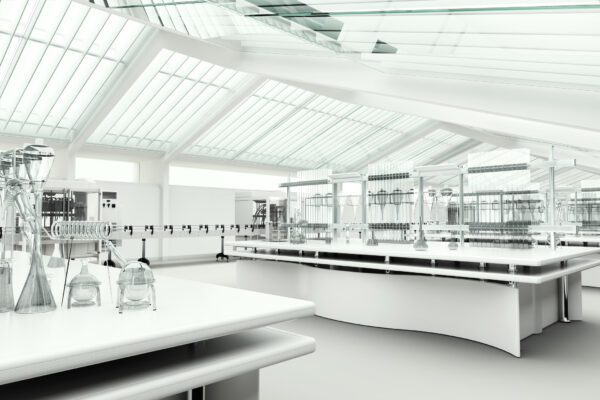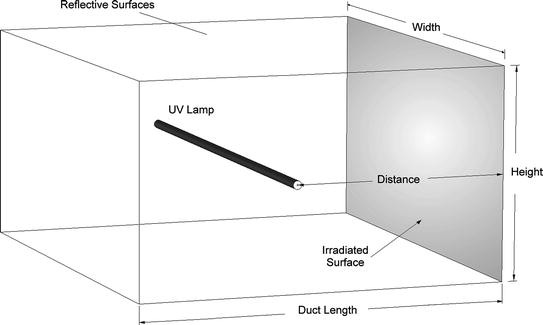UV Surface Disinfection Made Simple: Executing Finest Practices for Ideal Results
Revealing the Benefits of UV Disinfection: Ensuring Clean and Disinfected Areas
In the age of increased recognition surrounding health and cleanliness, the significance of efficient sanitation methods can not be overemphasized. While traditional cleaning techniques have actually long been trusted, innovations in technology have actually presented an innovative remedy that guarantees tidy and disinfected spaces: UV disinfection. By taking advantage of the power of ultraviolet light, this method has obtained recognition for its capability to remove damaging virus and supply a comprehensive sanitization procedure. Nonetheless, the advantages of UV disinfection extend far past its efficiency. This conversation will certainly discover the scientific research behind UV sanitation, its effectiveness on different microorganisms, its applications in different settings, and the advantages it holds over typical techniques. In addition, we will certainly look into the safety and security factors to consider that should be taken into consideration when implementing UV disinfection. Prepare to uncover a new dimension of cleanliness and discover the untapped potential of UV disinfection.

The Science Behind UV Sanitation
UV sanitation is a clinically tested approach that utilizes ultraviolet light to eliminate dangerous microbes from surface areas and water. The scientific research behind UV disinfection hinges on the capability of UV-C light to damage the DNA and RNA of bacteria, providing them incapable to reproduce and causing their eventual death. UV-C light falls within the wavelength variety of 200 to 280 nanometers, which is very reliable in damaging microorganisms, viruses, and other pathogens.
When exposed to UV-C light, the hereditary material of bacteria takes in the energy from the light, resulting in the development of thymine dimers. These dimers interrupt the typical duplication and transcription procedures of the bacteria, hindering their capacity to endure and reproduce (uv surface disinfection). The DNA and RNA damage caused by UV-C light is lethal to the microorganisms, making UV disinfection a dependable and effective method for killing a variety of pathogens
UV sanitation is particularly beneficial in environments where typical chemical anti-bacterials might be ineffective or not practical. It is a non-chemical approach that does not leave any kind of residues or damaging by-products, making it secure for usage in food handling, healthcare centers, water therapy plants, and different other industries. UV disinfection is eco friendly, as it does not add to the advancement of antibiotic-resistant bacteria or various other dangerous pollutants.
Performance of UV Disinfection on Pathogens
The efficiency of UV disinfection in eliminating virus has been thoroughly examined and shown in countless scientific research studies. UV radiation has the ability to suspend a vast array of microorganisms, including microorganisms, viruses, and fungis, by damaging their DNA or RNA. This avoids them from replicating and triggering infections.
One research published in the American Journal of Infection Control discovered that UV sanitation was reliable in lowering the visibility of multiple drug-resistant germs in hospital spaces. Another research carried out by the National Institute for Occupational Safety and security and Health demonstrated that UV sanitation was able to get rid of 99.9% of the influenza infection on surface areas.
UV sanitation has actually likewise shown pledge in combating the spread of healthcare-associated infections (HAIs) According to a study published in The Lancet, making use of UV-C light in addition to standard cleaning procedures substantially lowered the occurrence of HAIs in a healthcare facility setup.
Furthermore, UV disinfection has shown to be efficient against emerging microorganisms, such as the serious intense breathing syndrome coronavirus 2 (SARS-CoV-2), which triggers COVID-19. A research study performed by the National Arising Infectious Conditions Laboratories demonstrated that UV-C light can inactivate the virus on surfaces within seconds.
Applications of UV Disinfection in Different Setups
With its tested effectiveness in removing pathogens, UV sanitation has found applications in a selection of settings. UV sanitation is likewise beneficial in water therapy plants, where it is used to eliminate harmful microbes and offer secure drinking water.
An additional essential application of UV disinfection impends purification market. UV air cleansers are utilized in residential, business, and industrial setups to eliminate airborne microorganisms, viruses, and mold and mildew spores. This technology is especially useful in atmospheres where individuals read review are much more prone to respiratory infections, such as health centers, schools, and office complex.
In addition, UV disinfection is progressively being made use of in public transportation systems, such as buses and trains, to keep clean and sterilized rooms for passengers. UV light is utilized to decontaminate surfaces and air inside the automobiles, reducing the danger of spreading out transmittable diseases.
Advantages of UV Disinfection Over Typical Methods
In contrast to typical methods, UV disinfection uses a variety of unique benefits that make it a better choice in various industries and settings. One considerable benefit is its performance versus a broad variety of microbes, consisting of fungi, viruses, and germs. Unlike chemical disinfectants that may have limited effectiveness against specific microorganisms, UV disinfection is a non-selective process that can kill or inactivate a broad range of damaging microorganisms.
One more benefit of UV disinfection is its capability to offer efficient and rapid disinfection. Traditional disinfection methods frequently require longer contact times or multiple steps to accomplish the preferred degree of disinfection. In comparison, UV light can give prompt and constant disinfection, reducing downtime and increasing performance in different applications.
UV disinfection likewise provides a ecologically friendly and secure option to traditional sanitation approaches. uv surface disinfection. Unlike chemical agents, UV light does not leave any type of damaging article source deposits or spin-offs, making it appropriate for usage in delicate environments such as food handling facilities, medical care settings, and water treatment plants
Additionally, UV sanitation is a cost-effective remedy in the long run. While the ahead of time investment for UV sanitation systems might be higher than typical techniques, the functional costs are commonly lower. UV lights have a lengthy life expectancy and call for minimal upkeep, resulting in minimized labor and substitute prices.
Security Factors To Consider for UV Disinfection
Thinking about the possible risks linked with UV disinfection, it is important to resolve the safety factors to consider entailed in implementing this technology. UV disinfection makes use of ultraviolet light to kill or inactivate microbes, making it a reliable method for sterilizing different surfaces and items. Nonetheless, it is important to understand that UV radiation can likewise posture risks to human health and wellness if correct safety procedures are not adhered to.
First and leading, direct exposure to UV radiation can cause damage to the skin and eyes. Extended direct exposure can cause sunburn, skin damages, and also an increased risk of developing skin cancer. It is essential to make sure that UV sanitation systems are effectively confined and furnished with security functions such as automatic shut-off mechanisms or motion sensors to protect against unintended direct exposure.

In addition, correct training and education are crucial for those accountable for operating UV disinfection systems. They need to recognize the possible risks, comprehend the safety methods, and understand how to take care of and maintain the devices appropriately.
Final Thought
Finally, pop over to this site UV sanitation supplies various advantages in guaranteeing tidy and disinfected areas. Its performance in getting rid of microorganisms has actually been shown with clinical research. UV disinfection can be applied in numerous settings, including health care centers, food handling plants, and water treatment systems. Compared to traditional techniques, UV sanitation has benefits such as faster disinfection times, very little chemical use, and no harmful by-products. Security factors to consider have to be taken into consideration to avoid possible risks connected with UV exposure.
UV sanitation is a clinically proven approach that uses ultraviolet light to eliminate unsafe bacteria from surface areas and water. The DNA and RNA damage caused by UV-C light is lethal to the microorganisms, making UV disinfection a trustworthy and efficient technique for killing a wide range of virus.
An additional benefit of UV disinfection is its ability to provide quick and effective sanitation. UV sanitation uses ultraviolet light to kill or suspend bacteria, making it an efficient method for sanitizing numerous surfaces and objects. Contrasted to typical techniques, UV disinfection has benefits such as faster disinfection times, very little chemical usage, and no hazardous results.